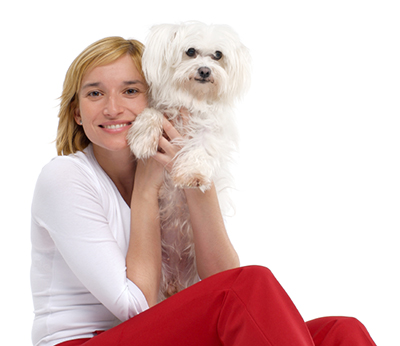If you’ve just come into possession of a dog, then you’ll want to secure yourself a few key items within the first few days. Let’s take a look at some of them.

Chip
In order to identify dogs, animal shelters and vets make use of a technology called chipping. Early on in a dog’s life, they’re implanted with a special microchip containing a reference number, which can be used to look up their owner’s information.
While implanting a microchip into a dog’s skin might seem a dramatic procedure, the reality is remarkably mundane. The device is around the size of a grain of rice, and is implanted using a special pen. It’s over in seconds, and can be performed by a nurse. A chip will give your dog the best possible chance of being reunited with you if it should ever become lost – and so it’s an expense which should on no account be forgone.
Collar
Of course, there are more traditional physical ways of identifying a dog, in the form of a collar with the pet’s name and your contact details on it. Since most members of the public don’t have the facility to scan a chip, a collar still provides a useful way for anyone to quickly identify a lost dog and re-unite it with its owner.
Bed
Your dog will need somewhere to sleep – and if you don’t want your furniture to smell like dog very quickly, you’ll need to provide them with one. A large basket with a blanket folded inside will provide them with all of the comfort they need.
Toys
Chew toys are a great outlet for your dog’s destructive tendencies. They’ll provide entertainment while keeping your belongings safe from your dog’s teeth and claws. It’s important that you buy your dog toys which have been designed for dogs. Human toys may have tiny plastic moving parts which will cut into a dog’s mouth, and present a choking hazard. A large rubber bone, or a squeaky toy, will provide the dog with hours of fun without posing any harm to them.
Grooming Equipment
If you’re the owner of a particularly furry dog, like a Samoyed or a husky, then you’ll want to be sure that you keep its fur in good condition. But even short-haired breeds with benefit from occasional grooming. You can either have this done professionally, or you can do it yourself – and in the process acquire a skill for life!
In order to groom a dog, you’ll need a brush and some appropriate shampoo. It’s important we don’t use shampoo that’s been designed for humans, here, as dogs have sensitive skin and may react badly to the chemicals you might find in such products.
Regular brushing will help to minimise the amount of stray hairs you find lying around your house and garden. But not all dogs will enjoy being brushed. If your dog is particularly averse to the sensation, then you might want to invest in a grooming glove – which comes with special rubber fibres that’ll pick up stray hairs as you stroke the dog.
Car Boot Liner
Walking the dog is one of the principle duties of a dog-owner. You’ll therefore want to occasionally bundle your dog into the back of your car and drive to your nearest woodland area for a long walk. Of course, such areas are filled to the brim with dirt, small insects, and dead plant matter, all of which your dog will likely delight in exploring.
This presents a problem, as your dog will likely be filthy by the time it returns to your vehicle. In order to protect your boot, and guard against the cost of a regular valet service, you’ll need to invest in a quality boot liner. Boot liners come in many forms; the cheaper ones are a sheet of fabric which doesn’t last particularly long, and offer minimal protection. The better specimens, on the other hand, are those which are tailor made to fit a given model of boot – you’ll find Ford, Mercedes and Land Rover boot liners at specialist retailers. They’re far more durable, and provide a snug fit that’ll exclude every stray hair and particle of dirt.
Lead
If you’re going to be taking your dog for a walk (as you certainly should) then you’ll need a means of restraining them. A lead provides exactly such means. For larger dogs, or more powerful smaller ones like terriers, you might want a harness to fit to them. This will help to spread the force of your pulling the lead over a larger area, which will make it easier to control the dog – and it’ll prevent the collar from digging into their throat.